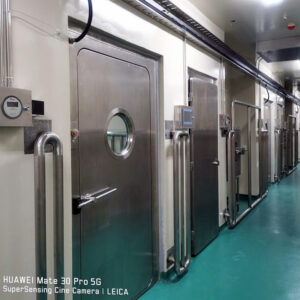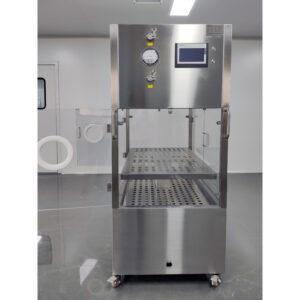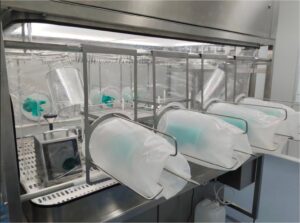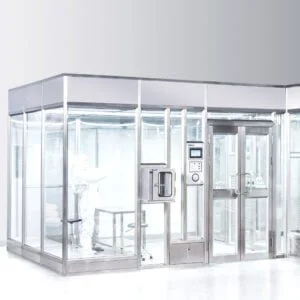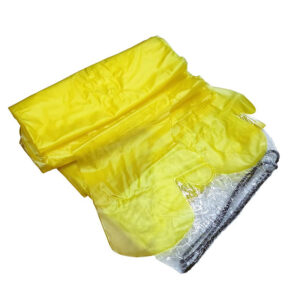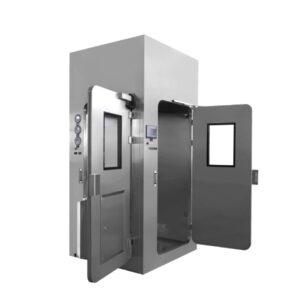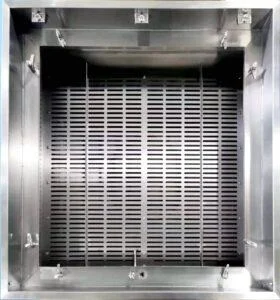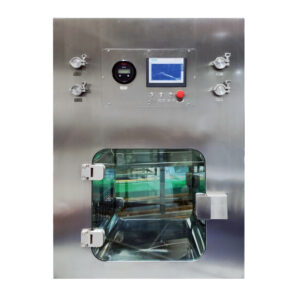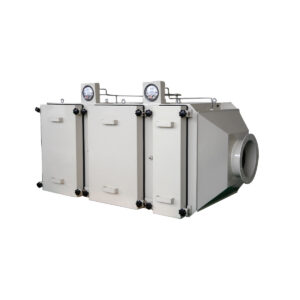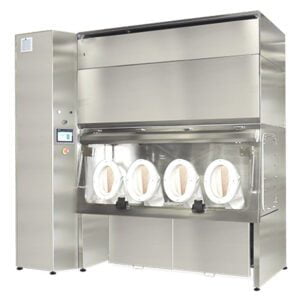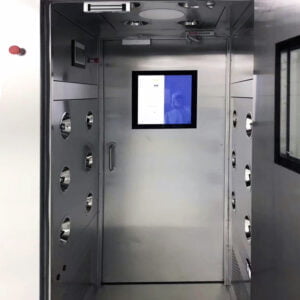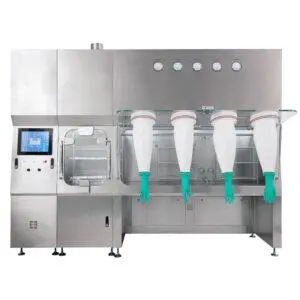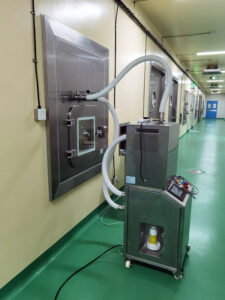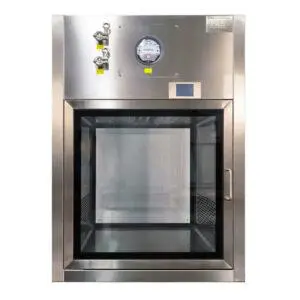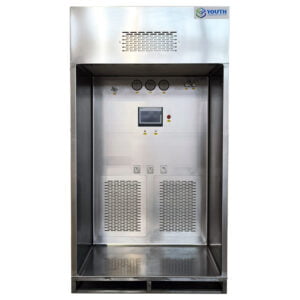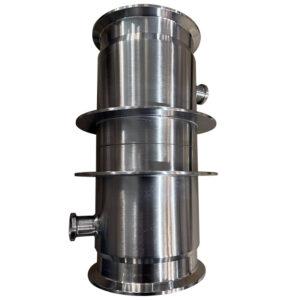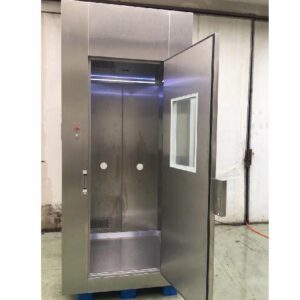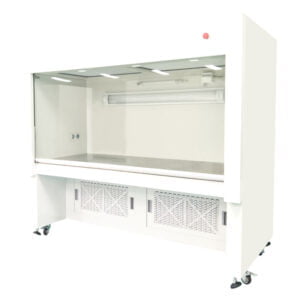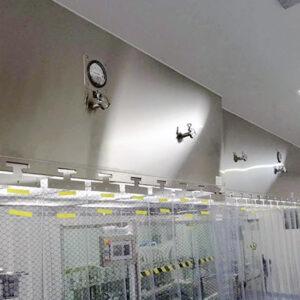Got a call last Tuesday from a lab manager at a pharmaceutical research facility, and honestly, it reminded me why I both love and get frustrated with this industry. She was dealing with a contamination scare during a filter changeout – you know, the kind that makes everyone panic and start pointing fingers. Turns out, they’d been using a standard bag-out system for their BSC exhaust filters, and during the removal process, someone had basically exposed the entire lab to whatever nasties those HEPA filters had been trapping for the past year.
“Why didn’t we go with a BIBO system?” she asked me, clearly frustrated. And look, I get it. BIBO – Bag-In, Bag-Out – systems aren’t cheap, and when you’re spec’ing out a new research facility or upgrading lab equipment, it’s easy to cut corners on containment features that seem like overkill… until they’re not.
Here’s the thing: I’ve been working with cleanroom and laboratory filtration equipment for close to fifteen years now (yeah, I’m getting old), and if there’s one area where I’ve seen the industry really evolve, it’s in how we handle contaminated filters. And BIBO systems? They’re not just fancy equipment – they’re basically insurance policies that actually pay out when things go sideways.
Why I’m Borderline Obsessed with BIBO Technology
Call me paranoid, but after you’ve dealt with one exposure incident involving cytotoxic pharmaceutical residues, you start looking at filter changeouts differently. That incident was about eight years ago at a contract research facility in Suzhou – nothing catastrophic, thankfully, but the cleanup, the incident reports, the regulatory scrutiny… it was a nightmare that could’ve been completely avoided.
BIBO systems are specifically designed to contain contaminated filters during removal and replacement. The whole “bag-in, bag-out” name is pretty literal – you install filters through a sealed bag system, and when it’s time for changeout, you remove them through another sealed bag. No exposure to the contaminated filter surface. No aerosol release. No panicked calls to EH&S.
But (and there’s always a but), not all BIBO systems are created equal, especially when we’re talking about laboratory applications. Research facilities have different requirements than, say, a nuclear facility or a biodefense lab. The contamination profiles are different, the regulatory frameworks vary, and honestly, the budgets are usually tighter.
The Research Facility Reality Check
So let’s talk about what actually happens in research labs, because this is where theory meets reality in sometimes messy ways.
Most analytical labs and research facilities I work with are dealing with some combination of:
- Pharmaceutical compounds (APIs, intermediates, some pretty nasty cytotoxics)
- Biological agents (everything from BSL-2 bacteria to cell cultures)
- Chemical fumes and vapors (solvents, reagents, the usual suspects)
- Radioactive materials (less common but a whole different level of concern)
And here’s what drives me crazy: I’ve seen facility managers try to use standard HEPA housings with manual bag-out procedures for all of these applications. Sure, it technically works – until you actually need to change that filter. Then you’re dealing with decon procedures, temporary containment setups, sometimes complete room shutdowns. I watched one pharmaceutical lab spend three days preparing for a single filter changeout because they didn’t have proper BIBO containment. The labor costs alone probably would’ve paid for a decent BIBO system.
The reality is that research facility BIBO systems need to be versatile. You’re not always dealing with the same contaminants, protocols change, research directions shift. That biosafety cabinet that’s handling bacterial cultures this month might be used for aerosolized drug formulations next month.
What Actually Makes a Good Laboratory BIBO System
Okay, so based on actual installations I’ve done (and a few that didn’t go as smoothly as I would’ve liked), here’s what matters for laboratory applications:
Filter Accessibility Without Compromising Containment
This sounds obvious, but you’d be surprised how many BIBO systems I’ve seen that are technically very safe but practically unusable. I remember this one installation at a university research center – beautiful equipment, top-of-the-line HEPA filters, perfect containment… and it took three people plus a maintenance engineer two hours to change a filter. In a research setting where you might have seasonal studies or changing protocols, that’s just not sustainable.
The laboratory BIBO systems that actually work well in the field have thought through the ergonomics. Filter housings at reasonable heights (not too high, not requiring people to crouch), clear labeling for the bag-in and bag-out ports, and – this is key – documentation that’s actually usable. I’ve dealt with too many Chinese-manufactured units where the English manual was clearly machine-translated and basically useless for training lab staff.
Appropriate Filter Configurations
Most research facilities don’t need massive filter banks. You’re typically looking at individual biosafety cabinets, fume hood exhausts, maybe some specialized containment equipment. The BIBO systems need to match that scale.
I usually recommend 12″x12″ or 24″x24″ filter configurations for lab applications – anything bigger gets unwieldy, anything smaller and you’re changing filters too frequently. Mini-pleat HEPA filters work great for most applications, though honestly, I still prefer gel-sealed filters for high-containment scenarios. Call me old-school, but I’ve seen too many gasketed filters develop leaks over time, especially in labs where temperature and humidity aren’t perfectly controlled (which is, you know, most of them).
Real-World Decontamination Integration
Here’s something that doesn’t get talked about enough: most laboratory BIBO systems need to integrate with decontamination procedures. If you’re working with biological agents, you’re probably doing vaporized hydrogen peroxide or formaldehyde decon cycles. Your BIBO housing needs to handle that without degrading gaskets or compromising seals.
I learned this the hard way at a BSL-3 research facility. We’d installed what I thought was a perfectly good BIBO system, all the right specifications, tested beautifully during commissioning. Six months later, after multiple VHP decon cycles, the internal bag seal gaskets had deteriorated and we had leakage during a filter changeout. Wasn’t catastrophic, but it was embarrassing and expensive to fix. Now I always specify VHP-compatible materials for any laboratory BIBO application where decon is part of the protocol.
The Containment Spectrum: Where BIBO Actually Makes Sense
Look, I’m not going to tell you that every lab needs BIBO systems. That would be dishonest, and frankly, it’s not economically realistic. But there’s definitely a spectrum of risk where BIBO goes from “nice to have” to “why on earth don’t you have this already?”
Definitely Need BIBO:
- Anything involving BSL-3 or BSL-4 biological agents (this should be obvious)
- Cytotoxic pharmaceutical research
- Radioactive material handling with particulate generation
- High-potency API development (especially oncology compounds)
- Prion research (because prions are a special kind of nightmare)
Probably Should Have BIBO:
- BSL-2 work with aerosolization potential
- Sensitizing agents and allergen research
- Nanoparticle synthesis and handling
- Multi-use research spaces where contamination profile varies
- Any lab with immunocompromised researchers
Maybe Consider BIBO:
- General chemistry labs with toxic vapor exposure
- Standard analytical labs (though honestly, standard procedures are usually fine here)
- Teaching labs with higher turnover and training concerns
That middle category – the “probably should have” – that’s where I end up having the most conversations. Budget constraints are real, and I get that. But I’ve also seen what happens when you skip proper containment and something goes wrong. The incident response costs, potential exposure monitoring and medical follow-up, regulatory scrutiny, reputation damage – it adds up fast.
The Manufacturing Side: What I Look For
When I’m spec’ing scientific BIBO containment equipment for a client, there are a few things I’ve learned to pay attention to based on equipment that’s performed well (and some that hasn’t).
Build Quality and Materials
Stainless steel construction is pretty much standard, but the quality of welds and surface finish matters more than you’d think. I’ve seen cheaper BIBO housings where the welds weren’t properly passivated, and after a few decon cycles, you’d start seeing corrosion. In a cleanroom or lab environment, that’s not just ugly – it’s a contamination source and a structural concern.
The bag ports themselves need to be robust. Look, lab techs aren’t always gentle with equipment (they’re focused on their research, not babying the filtration system), so those bag connection points need to handle some abuse. I prefer systems with metal bag rings rather than plastic – they cost a bit more but they last significantly longer, especially in high-use facilities.
Filter Sealing Methods
This gets technical, but it matters: how does the filter actually seal within the BIBO housing? I’ve worked with gel-seal systems, knife-edge gasket systems, and fluid-seal designs.
For laboratory applications, I’m honestly not a huge fan of knife-edge gaskets. They work fine if everything is perfectly aligned and nobody ever over-torques anything, but in real-world conditions? I’ve seen too many marginal leak tests. Gel-seal filters are more expensive but they’re more forgiving during installation and they maintain their seal better over time.
Fluid-seal systems are interesting – there’s a company making laboratory BIBO systems with oil-filled seal channels, and the theory is sound, but I haven’t worked with them long enough to have a strong opinion on long-term reliability. Ask me again in five years.
Testing and Validation Accessibility
Here’s something that frustrates me about some custom laboratory BIBO manufacturing: they design these containment systems but don’t think through the validation and routine testing requirements.
Every BIBO system needs scan test ports for HEPA leak testing. They need to be positioned where you can actually access them with your aerosol photometer without contorting yourself into weird positions. They need pressure gauge ports for monitoring filter loading. And ideally, they should have ports compatible with fumigation decon procedures.
I once dealt with a BIBO system that had the scan test port positioned directly behind a structural support beam. Technically accessible, but you basically needed to be a contortionist to get your test probe in position. Made the annual certification process way more difficult than it needed to be.
Regional Considerations That Actually Matter
Since most of my work is in Asia-Pacific markets (though I’ve done projects in Europe and North America too), there are some region-specific realities worth mentioning.
Manufacturing and Supply Chain
A lot of laboratory BIBO manufacturing happens in China and Taiwan these days. This isn’t inherently good or bad – I’ve seen excellent equipment from Chinese manufacturers and mediocre stuff from European companies. But there are some things to watch out for:
Quality consistency can vary. I’ve had experiences where the first unit from a manufacturer was perfect, and subsequent units had noticeable quality differences. This seems to be less of an issue with established manufacturers, but if you’re going with a newer supplier to save costs, inspect every unit carefully.
Lead times can be tricky, especially around Chinese New Year. If you’re planning a laboratory renovation or new facility build, account for potential manufacturing and shipping delays. I learned this lesson when a research facility construction timeline got completely derailed because we didn’t receive BIBO systems until six weeks after the scheduled delivery date.
Standards and Compliance
ISO 14644 cleanroom standards apply globally, but the specific regulatory requirements for research facilities can vary significantly by region.
In China, there’s increasing regulatory scrutiny around pharmaceutical research facilities, especially for high-potency compounds. The requirements are catching up to European and US standards, which means more emphasis on containment. That’s actually driving demand for better laboratory cleanroom BIBO solutions.
Japan has some of the strictest requirements I’ve encountered for radioactive material handling. If you’re spec’ing BIBO systems for any nuclear medicine research or radiopharmaceutical work in Japan, the documentation and certification requirements are extensive.
Southeast Asian markets are growing rapidly in biotech research, but I’ve noticed the regulatory frameworks are still evolving. Sometimes you’re working with clients who are trying to meet international standards without clear local guidance. In those cases, I usually recommend defaulting to US or European containment standards – better to exceed local requirements than find out later you’re non-compliant.
Environmental Factors
This might seem minor, but environmental conditions affect BIBO system performance more than people realize.
High humidity in tropical climates can affect filter media and gasket materials. I’ve seen premature filter loading and gasket degradation in facilities without proper environmental controls. If you’re installing laboratory BIBO systems in Southeast Asia, proper HVAC support isn’t optional.
Coastal facilities deal with salt air corrosion. Stainless steel helps, but I still recommend more frequent inspections and maintenance for any research facility within a few kilometers of the ocean.
Seismic considerations matter in places like Japan, Taiwan, and the Philippines. BIBO housings need proper anchoring, and you need to think about what happens to containment integrity during an earthquake. (Honestly, this is something I didn’t pay enough attention to early in my career, but after experiencing a moderate earthquake at a Taiwan facility, it’s now always part of my specification process.)
The Installation and Commissioning Reality
Okay, so you’ve selected your analytical lab BIBO filters and housing, equipment is delivered, now what? This is where theory meets reality, and sometimes it’s not pretty.
Pre-Installation Prep
I cannot stress this enough: verify your ceiling or duct infrastructure before the installation date. I’ve shown up to installation appointments where the structural support wasn’t adequate, ductwork dimensions didn’t match specifications, or electrical service wasn’t in place.
For laboratory applications, you also need to coordinate with the research schedule. You can’t just shut down a BSC or fume hood mid-experiment. Planning the installation window requires actually talking to the researchers and understanding their work cycles. I’ve had installations delayed by weeks because nobody bothered to check that we were scheduling work during the middle of a critical study period.
Leak Testing and Validation
Every BIBO system needs to be leak tested after installation. Not just the filters – the entire containment envelope. This includes the bag ports, housing seams, any penetrations for gauges or test ports.
I use a combination of DOP aerosol testing and pressure decay testing. The aerosol photometer scan test is standard procedure for HEPA integrity, but I’ve found that pressure decay testing often catches housing leaks that might be missed during a standard scan test.
Here’s something that surprised me early in my career: even brand-new BIBO systems sometimes fail initial leak testing. It’s not always a manufacturing defect – often it’s just a gasket that wasn’t seated quite right or a port that wasn’t fully tightened. Allow time in your commissioning schedule for remediation and retesting. I usually budget about 1.5x the theoretical testing time for BIBO commissioning, which has proven pretty accurate.
Training and Documentation
The fanciest BIBO containment system in the world is useless if lab personnel don’t know how to use it properly. I always insist on hands-on training as part of the installation scope.
This training needs to cover:
- Normal operation and monitoring
- Filter changeout procedures (with actual demonstration)
- Emergency procedures if containment is compromised
- Routine inspection and maintenance
- Integration with decon protocols
I like to create site-specific documentation with photos of the actual installation, not just generic manual diagrams. It makes training new staff members much easier down the line.
Cost Realities Nobody Wants to Talk About
Let’s talk money, because this is often where discussions get uncomfortable.
A decent research facility BIBO system for a single biosafety cabinet or similar application typically runs anywhere from $8,000 to $25,000 USD, depending on size, features, and manufacturer. Custom configurations or specialized applications can push that higher.
That’s not chump change for most research budgets. And that’s just the equipment cost – installation, commissioning, and initial training adds another 20-40% typically.
But here’s the thing: compare that to the cost of an exposure incident. Medical monitoring for potentially exposed personnel can easily run $5,000-10,000 per person. Facility downtime and decontamination? Tens of thousands. Regulatory penalties? Don’t even get me started. Legal exposure if someone actually gets injured? You’re talking potentially millions.
I had a client who balked at spending $15,000 for a BIBO system on a cytotoxic drug research BSC. Six months later, they had a filter changeout incident that resulted in three exposed personnel, two weeks of facility downtime, an OSHA investigation, and total costs that exceeded $200,000. They installed BIBO systems on every containment unit after that.
I’m not trying to fearmonger – most research facilities operate safely without major incidents. But the risk calculus is real, and it’s worth being honest about.
What’s Actually New and Worth Paying Attention To
The filtration industry moves slower than some sectors, but there have been some interesting developments in BIBO technology over the past few years.
Modular and Scalable Designs
I’ve been seeing more modular BIBO systems designed specifically for research facilities. The idea is that you can start with a basic configuration and add features or capacity as needs change. This is actually pretty smart for research applications where today’s protocols might be completely different from next year’s.
One manufacturer (and I’m not going to name names because this isn’t a sales pitch) has a system where the basic BIBO housing can accommodate different filter sizes and types without major modifications. For a multi-use research space, that’s genuinely useful.
Integrated Monitoring and IoT Features
Look, I’m generally skeptical of “smart” equipment because often it’s just adding complexity and failure points. But some of the newer BIBO systems with integrated pressure monitoring and filter life indicators are actually useful.
Real-time pressure differential monitoring can alert you to filter loading issues before they become problems. In a research setting where equipment might not be constantly attended, that’s valuable. And remote monitoring means facility managers can keep track of multiple BIBO systems without physically checking each one daily.
The key is that this technology needs to be reliable and not overly complex. If the monitoring system requires constant recalibration or generates false alarms, people will just ignore it. I’ve seen this happen with other “smart” cleanroom equipment.
Improved Decon Compatibility
Newer BIBO designs are being engineered specifically for compatibility with automated decon systems. VHP compatibility used to be hit-or-miss, but more manufacturers are now testing and certifying their equipment for repeated decon cycles.
This matters because automated decon is becoming standard practice in higher-containment research facilities. If your BIBO system can’t handle the decon protocols, you’re creating operational headaches.
Where the Industry is Heading (My Take)
Honestly, I think we’re going to see increasing demand for laboratory BIBO solutions as regulatory requirements tighten and safety awareness improves. The pharmaceutical and biotech research sectors are growing, especially in Asia, and containment requirements are going up, not down.
What worries me a bit is the potential for a commoditization race to the bottom. As more manufacturers enter the space, there’s price pressure, and sometimes that means corners get cut. I’ve already seen some suspiciously cheap BIBO systems on the market that I would not trust in a high-containment application.
The research facilities that are doing it right are focusing on lifecycle cost, not just upfront price. A well-built BIBO system should last 15-20 years with proper maintenance. A cheap system that needs replacement after five years isn’t actually saving money.
I’m also seeing more customization for specific research applications. Generic “one-size-fits-all” BIBO systems work okay, but there’s real value in equipment designed for specific contamination profiles or operational requirements. Custom laboratory BIBO manufacturing isn’t just about ego – it’s about matching the containment solution to the actual risk.
Practical Recommendations Based on What Actually Works
If you’re a research facility manager or lab director trying to figure out whether and what type of BIBO containment you need, here’s my honest advice:
Start with a Real Risk Assessment
Not a checkbox compliance exercise, but an actual evaluation of what you’re working with and what could go wrong. Talk to your researchers, understand the materials and processes, and think through the filter changeout scenario. If that scenario makes you uncomfortable, you probably need BIBO.
Don’t Cheap Out, But Don’t Overbuy Either
You don’t need nuclear-grade containment for BSL-2 bacterial work. But you also shouldn’t be looking for the absolute cheapest option if you’re handling high-potency compounds. Match the equipment to the actual risk and regulatory requirements.
Plan for the Full Lifecycle
Consider installation, commissioning, training, maintenance, and eventual decommissioning costs. A BIBO system is a long-term investment, and the total cost of ownership matters more than the purchase price.
Work with People Who Actually Know This Stuff
There are a lot of equipment vendors out there, but not all of them really understand containment applications. Find suppliers and consultants who have actual research facility experience, not just cleanroom theory. Ask for references from similar applications.
Test and Validate Properly
Don’t skip commissioning and validation. Don’t accept equipment without proper leak testing and documentation. And don’t assume that because it’s new, it’s working correctly. I’ve caught enough issues during commissioning to know that verification testing isn’t optional.
The Stuff I Still Worry About
Even after all these years working with containment equipment, there are some things that keep me up at night:
Training turnover in research facilities is a real issue. You train everyone perfectly on BIBO procedures, then six months later half the lab staff has turned over and the new people never got proper training. How do you maintain procedural compliance with high turnover? Honestly, I don’t have a perfect answer to this.
Complacency is another concern. After years of routine filter changeouts without incident, people get comfortable and start taking shortcuts. That’s when accidents happen. I try to emphasize that BIBO procedures need to be followed every single time, not just when you’re handling “scary” stuff.
And I worry about laboratories in regions with less developed regulatory oversight. If there’s no external enforcement driving proper containment practices, are facilities really investing in appropriate equipment? Sometimes I suspect the answer is no, and that bothers me from a public health perspective.
Wrapping This Up
Look, BIBO systems aren’t sexy equipment. They’re basically just boxes with bags that let you change contaminated filters safely. But after you’ve seen what can happen when filter changeouts go wrong, you develop an appreciation for boring but reliable containment.
For research facilities working with hazardous materials – and honestly, that’s most of them – proper BIBO containment isn’t optional equipment. It’s a fundamental safety control that protects your people and your operations.
The technology has matured to the point where there are good options available at reasonable prices from reputable manufacturers. The installation and validation processes are well established. The regulatory drivers are increasingly clear.
What’s often missing is just the willingness to prioritize containment in the budget and planning process. It’s easy to defer safety equipment when budgets are tight and there are competing priorities. But here’s the thing – you never regret investing in proper containment. You absolutely regret not having it when you need it.
If you’re setting up a new research facility or upgrading existing laboratories, take the time to properly evaluate your containment needs. Talk to people who’ve actually worked with these systems (not just sales reps reading from specification sheets). Think through the realistic scenarios where filters need to be changed.
And if you determine that BIBO is appropriate for your application – which it probably is if you’re working with anything notably hazardous – invest in doing it right. Good equipment, proper installation, thorough commissioning, and ongoing training.
That’s the stuff that actually matters when you’re trying to run a safe research operation. Everything else is just details.
Anyway, that’s my take on laboratory BIBO systems after entirely too many years in this industry. Your mileage may vary, and I’m sure some people will disagree with parts of this, but at least it’s based on actual projects and real equipment performance rather than manufacturer marketing materials.
Stay safe out there, and for the love of all that’s holy, don’t try to change contaminated filters without proper containment. Trust me on this one.
Related Contents:
- Bag-In/Bag-Out (BIBO) Systems: Operation and Maintenance Guide
- Bag In Bag Out Systems | Safety Fundamentals Explained
- Understanding BIBO | Hazardous Material Containment
- Safe Chemical Handling with BIBO Systems
- Top 5 BIBO Containment Solutions for 2025
- BIBO System Basics | Bag In Bag Out Filter Principles
- BIBO vs. Traditional Containment: Which is Better?
- How BIBO Works | Containment Filter Technology Guide
- BIBO Systems: Enhancing Lab Safety & Efficiency


